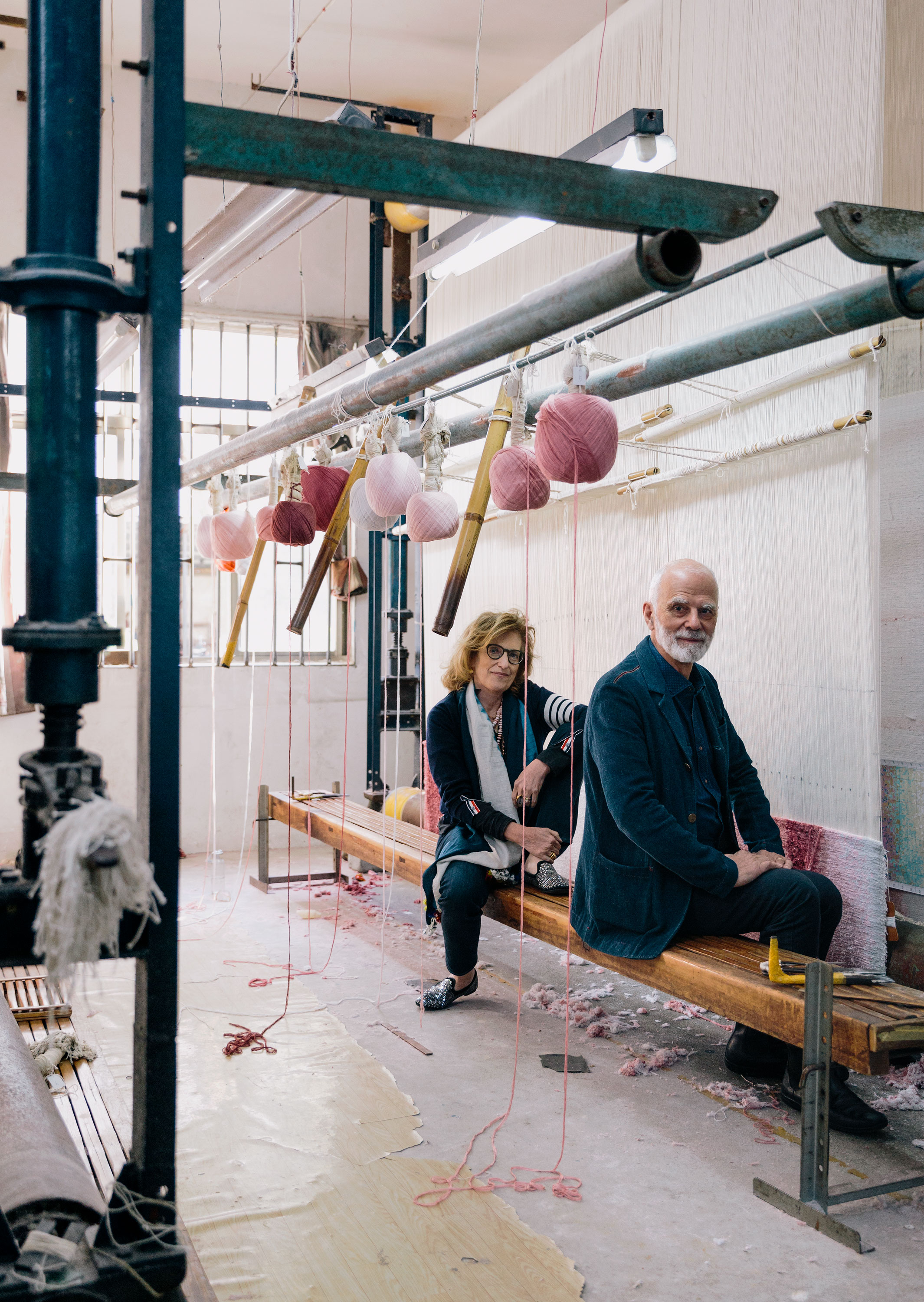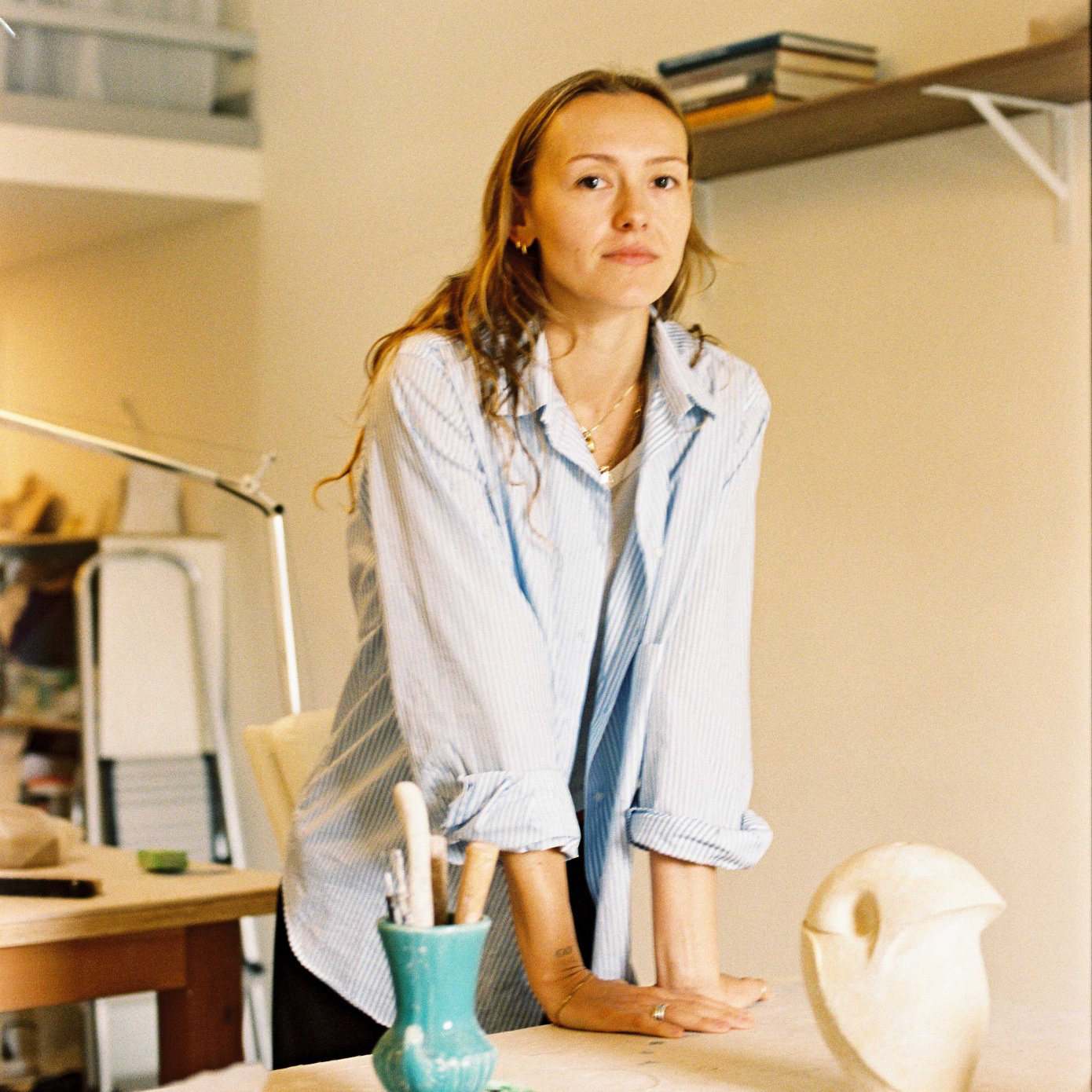
The word “carpet” may not conjure up the image of something at the forefront of artistic design, technology and luxury, but those made by Fort Street Studio sit at exactly that intersection. For more than two decades, artist couple Janis Provisor and Brad Davis have been deftly translating paint to plush, with results that prove a work of art need not hang on a wall or sit atop a table.
The pair’s latest undertaking is Progetto Passione, a limited run of eight intricate, expressive designs, launched this summer in collaboration with Sotheby’s. Fort Street maintains outposts in Hong Kong, New York and London and Provisor and Davis are fond of traveling to far-flung locales, where they create abstract paintings that then become carpets. These latest designs were loosely inspired by the environs of Roccantica, Italy.
“The atmosphere made us want to push our design sensibility a little bit further,” recalls Davis. “We sat there in Italy in this big studio and we would talk about ideas,” Provisor adds. “We just sat with each other and worked and subtracted and added.”
With Fort Street’s signature watercolor gradients plus the interwoven metallic accents, individual rugs can take up to six months for weavers to fabricate. In a brochure for the collection, each weaver is thanked personally. “We did this because we felt they did a heroic job,” Provisor explains.
While Fort Street doesn’t typically work in a collection-based format, Provisor and Davis say they felt the pull to create a group of carpets that were in dialogue with one another. This way of working also allowed them to maintain a rare sense of artistic authority; though most of their carpets allow for customization by buyers, these do not. “We didn’t want to feel that we were compromising in any way—in terms of color or how it fits into a room. We knew the people that would buy these would have an interest in art,” says Provisor.
If Fort Street’s practice is atypical for the worlds of both art and décor, that’s because doing the unexpected is par for the course for both Provisor and Davis, who both maintain successful solo practices outside of Fort Street. While the project changed directions in the early ’90s, out of New York and into China, much to the dismay of their contemporaries, they still consider themselves New York artists.
It was while traveling in China during that time that they decided to get a custom carpet made for their loft in New York. When they were told their design was far too complex to fabricate, they suddenly found themselves on a mission to do so anyway. It took about two and half years for them to figure out how to “weave a watercolor,” as Davis puts it. “The problem was to come up with a pattern that weavers could read. And the real breakthrough was realizing that a knot was a pixel.”
These days, when their aesthetic is mimicked by many, Fort Street is still making breakthroughs. For example, Progetto Passione’s dreamy metallic flatware areas were created with wire typically reserved for computers and telephones, a choice that echoes the crucial role that technology has played in Davis and Provisor’s modernization of an ancient craft.




